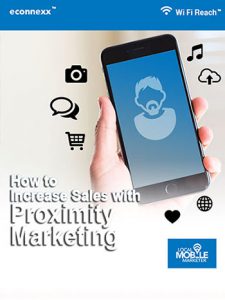What do you look at first when you wake up?
That’s tens of millions of people, every morning.
Smartphones may as well be another limb, with one in six UK adults looking at their devices more than 50 times a day.
The figures are only rising as technology continues to advance and accessibility to mobile data becomes more ingrained into society.
Other predictions believe that by 2017, smartphone use between people aged 12 to 44 will be at 94% and 98%.
It also seems the more we use our phones, the more we expect to utilise them for everything – communicating, researching…and purchasing.
The future of advertising isn’t in newspapers anymore. It’s in each person’s hand, and it’s getting more personal by the day.
What Smartphones Mean For Advertisers
We’re all looking down, not up.
The big billboards plastered across city buildings – how can they get noticed when everyone’s walking down the streets staring at their phone?
The advertising market space is dramatically changing.
Mobiles are now the closest way of connecting you to customers.
And we’re not just talking about any old phone – specifically smartphones, which now represent more than 50% of mobile phone sales in the UK.
Smartphones allow people to have practically any information they could possibly need or want right at their fingertips.
And for businesses, smartphones open up a world of possibilities through this wonderful gem called proximity marketing.
Proximity marketing targets consumers who are in close proximity to your business and sends them a personal message or coupon which can be downloaded and viewed off the device.
Why should you use it?
Because mobile coupons can gain on average ten times the redemption rate of any other traditional coupon.
How To Make Proximity Marketing Work For You
Proximity marketing isn’t just limited to coupons.
Amongst other things you can use it to:
- educate customers about certain products,
- engage them through the use of polls and questionnaires, or to
- send out downloadable versions of catalogues and brochures – cutting costs on printing hard copies.
Studies have shown 45% of customers prefer to research and compare prices and availability from mobile devices.
Proximity marketing is the way forward for advertising; more than three quarters of UK advertisers plan to invest in proximity marketing within the next six months.
The Future of Your Advertising
Smartphones aren’t going anywhere – they’re here to stay and they’re only going to develop further as technology advances.
If businesses are too afraid to address new ways of advertising then they risk missing out on potential sales and new customers who are literally walking past the shop.
It’s time to think of smartphones as the new billboard.

